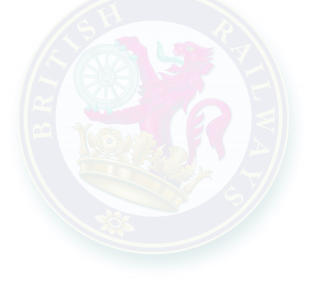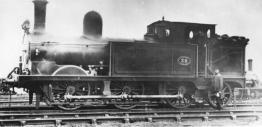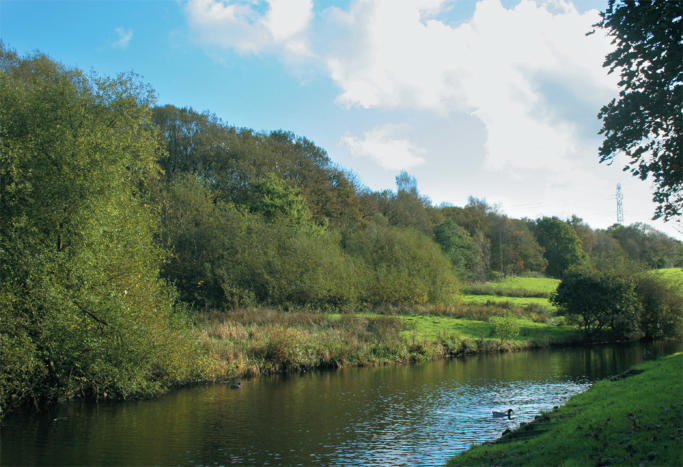
© www.white-coppice.co.uk 2022
Please read Feniscowles Station page also
Page 7 of 7




The Real Railway Children of Feniscowles
Page 7 of 7






The Landslip
of 1956
IF you recall in the E. Nesbit story, there is a landslip
onto the line and the children have to alert an
oncoming train of the danger.
Well, there was a landslip that occurred at
Feniscowles, when John and Stephen were just
toddlers, but of a much more serious
nature than the one in Nesbit’s story. It
all happened one day in 1956, on
Sunday 26th August to be precise.
It had been raining heavily, constantly
over a period of several days. At a
point several hundred yards south of
the station, a culvert
ran under the line, where the railway
was on an embankment, and at a point
where the Leeds Liverpool Canal
came quite close. Our Dad was the
resident signalman at Feniscowles but
because it was Sunday and it was his
‘Rest Day’, all the signals had been pulled off in the
‘all clear’ position. This was standard practice because
there were very few trains on a Sunday. However, on
this particular Sunday the line was being worked on by
men at Brinscall, two stations further along the line
towards Chorley. A local farmworker was going for a
stroll along the towpath of the canal, and as he looked
across towards the railway, he noticed that part of the
embankment had collapsed and the railway lines were
suspended in mid-air! He quickly went to Feniscowles
Police Station but there was nobody there. He then
tried to contact a Policeman he knew, who lived
nearby, but he had just gone on duty at Cherry Tree.
He then ran to Feniscowles Station to raise the alarm.
Straight away, our Dad then raced up the line to the
signalbox to put all signals at ‘danger’, and telephoned
the box at Cherry Tree to stop the 5.40pm train there,
which had already left Blackburn. The culvert had
washed away a large chunk of embankment due to
the heavy rain and several tons of earth had crashed
into the field below, leaving approximately a 25ft drop.
After inspection, it was decided that the train from
Blackburn could carry on to Chorley, as this side of the line
seemed to be okay. This train had to proceed with extreme
caution past the danger area. Then notification came of
another train running in the opposite direction. On the
telephone came the voice of the man in charge of the
workmen at Brinscall. He had
been informed of the landslip
but must have seen the train
from Blackburn arriving.
Thinking that the problem at
Feniscowles had been resolved,
he was going to allow the train
from Chorley to continue down
to Blackburn. Our Dad informed
him that if he did, the whole train
would end up in the canal!
The story became news and it appeared on the front
page of the local newspaper. Then, about 45 years later,
a strange thing happened. One of my work colleagues
had retired and he used to visit all of us at work
occasionally and one day he came by with something for
me. He had a set of stand chairs, the ones with seats that
can be upholstered. During its life, one of
these chairs had been padded with paper due to the seat
being flattened down through constant use. However, by
now the fabric covering was nearing the end of its life and
so he decided to re-cover the seats. As he peeled back
the old seat covering, the artificial repair revealed itself in
the form of a number of old newspapers, one of which
was that very copy showing the landslip of 1956! Now do
you believe in fate?
The Collision
of 1879 –
A lucky escape
DOCUMENTED in the National Archives
is the account of the 1879 collision, that
occurred on the afternoon of 27th January of
that year, involving a passenger and freight
train which collided at Feniscowles at
1.38pm, just south of the station. Judging
from the report, the accident occurred in
approximately the same place as the 1956
landslip.
It
involved
the
12.45pm
Wigan
to
Blackburn
passenger
train,
consisting
of
a
tank
engine
and four carriages which ran into the rear of
a goods train travelling in the same direction.
The passenger train was travelling at over
30mph. The goods train consisted of 16
loaded coal wagons and a brake van which
was running slowly ahead on the same line.
None of the vehicles left the rails and the
only damage to the rolling stock was to the
brake van. There were about twelve
passengers on board and just one
passenger complained of injury, having had
a tooth knocked out. The outcome could
have been far worse.
Signalling rules at the time were that no train
must be allowed to follow another train until
10 minutes had elapsed. Following trains had
to be stopped and sent forward with a
caution and a goods train must be shunted
out of the way of a passenger train at least 10
minutes before such a passenger train was
due.
On the day of the accident, the above rules
were not adhered to and, in fact the goods
train was only 5 minutes ahead of the
passenger train when it left Withnell. The
report concluded that the collision might have
been prevented by either the signalman at
Brinscall or the Stationmaster at Withnell. The
former ought not to have allowed the goods
train to start from Brinscall only 6 minutes
before the time that the passenger train was
due and the latter ought to have stopped the
goods train at Withnell in order to shunt it out
of the way of the passenger train.
Shortly afterwards, an improved signalling
system was installed on the line using the
block system (which had been ordered two
months before the date of the accident). This
system allowed only one train at any one time
to enter each section of track and so
theoretically a re-occurrence of this type of
accident would be impossible.


Above A Lancs & Yorks Railway engine similar
to the one involved in the accident
Photograph
courtesy of Lancashire & Yorkshire Railway Society.
www.lyrs.org.uk
Above The day after the landslip, with
workers repairing the damage
Photo courtesy of Lancashire Evening Telegraph
Below The site of both accidents today –
in the trees on the embankment, above the
Leeds & Liverpool canal

































